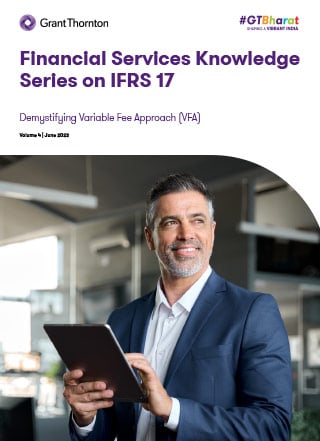Key highlights of the publication
- The Variable Fee Approach (VFA) method of IFRS 17 is a modification of the general model for insurance contracts with direct participation features, where the policyholders share in the profits and losses of the insurance company.
- Under the VFA, the insurance company promises to invest the policyholder’s money in assets that are expected to increase in value. The insurance company charges a fee for managing these assets, which is called the ‘variable fee’. The value of the variable fee changes based on the value of the assets.
- The VFA is a way to make sure that the insurance company’s liability values are connected to the underlying asset values. It helps to prevent accounting mismatches and ensures a smoother and more accurate calculation of profits and losses over time.
- Compared to the General Measurement Model, the difference under the VFA is that the group of insurance contracts have policyholders who participate in the share of a clearly identified pool of underlying items. The insurer expects that part of the profit of the underlying items needs to be paid to the policyholder, while the amount paid to the policyholder depends on the underlying item.
- The VFA is a valuable tool for investment funds, providing greater clarity and consistency in reporting and improving the understanding of the fees charged by investment managers.
- The upcoming release of our thought leadership series will focus on reinsurance contracts under IFRS 17.












